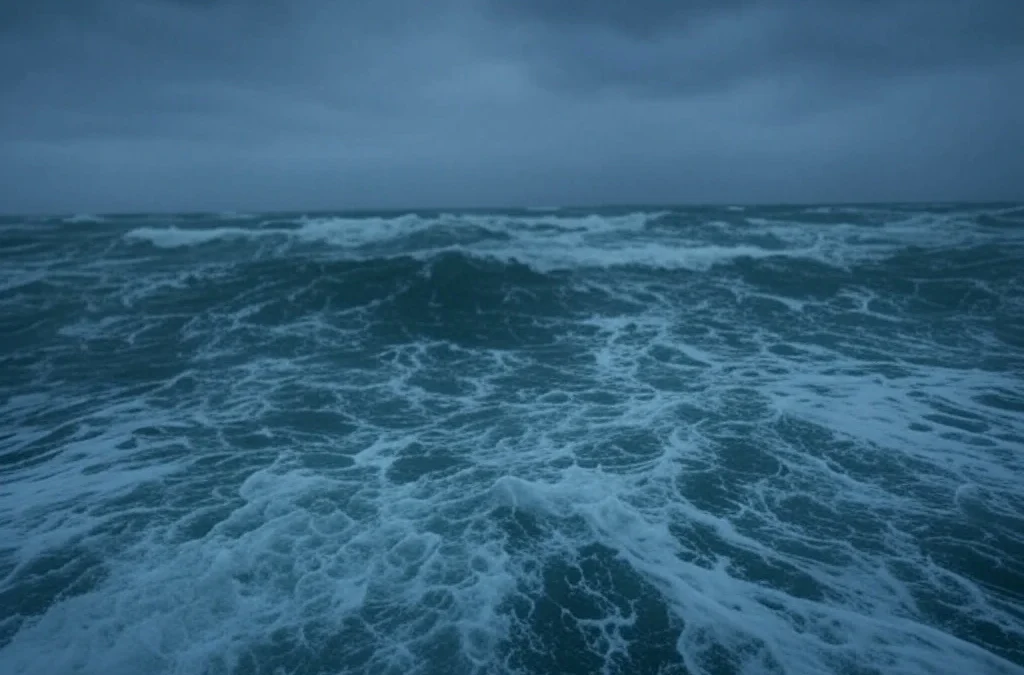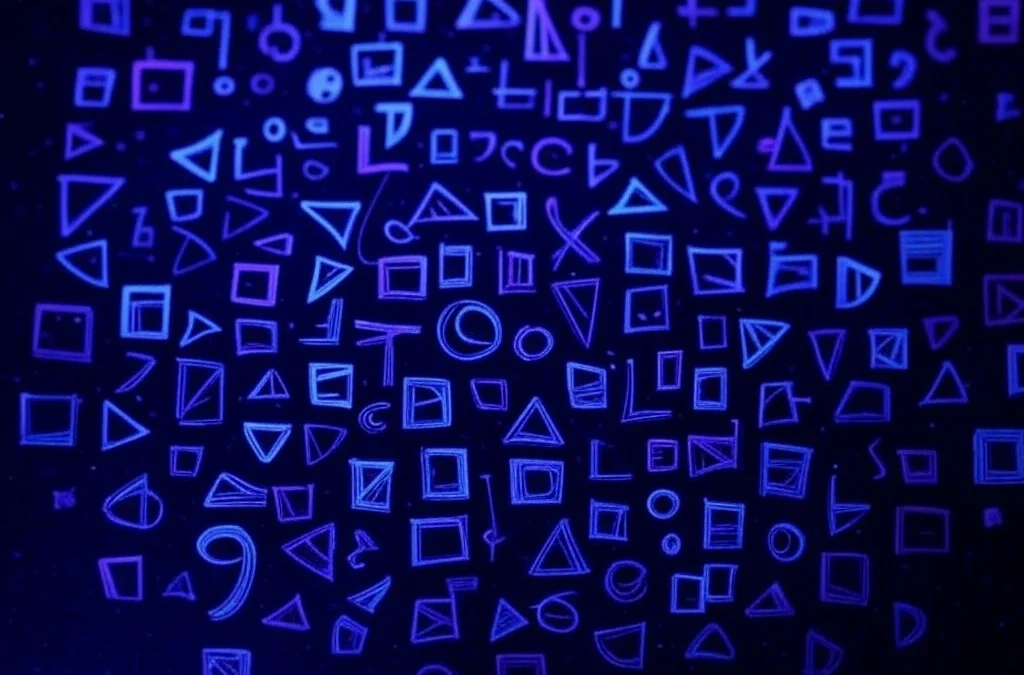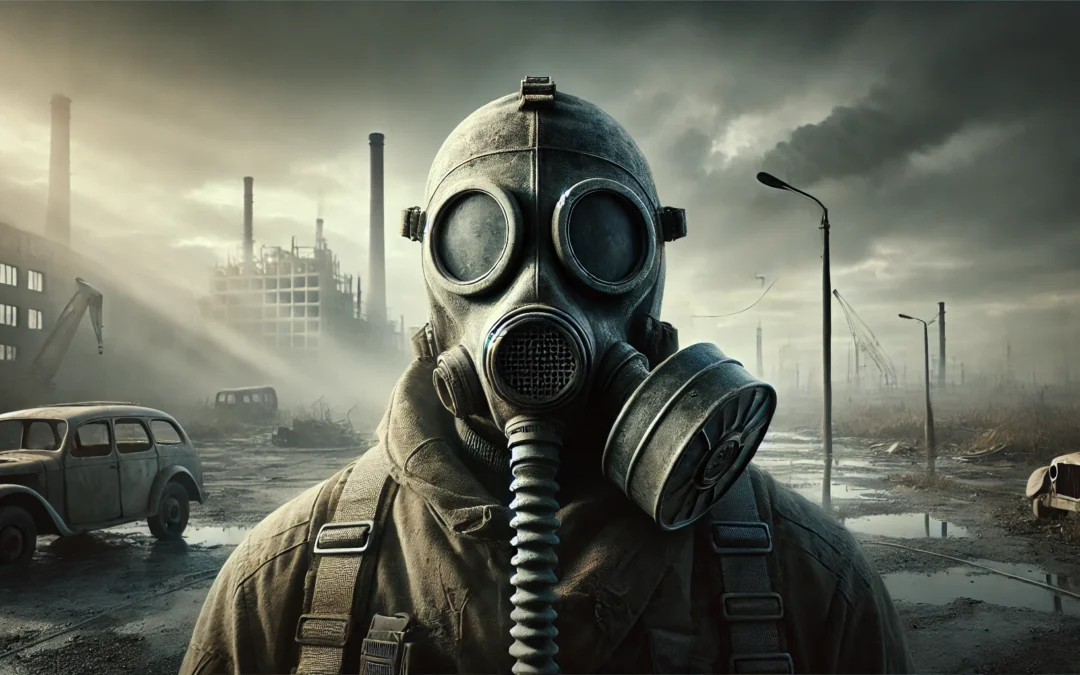Dystopian narratives have long captivated audiences by exploring imagined worlds where societal structures have crumbled, giving rise to nightmarish scenarios and cautionary tales. In this comprehensive guide, we’ll delve into the top 30 examples of dystopia, spanning literature, film, and other media. These dystopian works serve not only as gripping narratives but also as powerful reflections on the fragility of human freedoms and the collective responsibility to shape a more equitable future.
What is Dystopia?
Dystopia is a term used to describe an imagined society that is profoundly undesirable or frightening. Characterized by oppressive control, environmental disasters, or other extreme conditions, dystopias are often used in literature and film to explore themes of political, social, and ethical significance. This genre typically features a government or society that is in some important way undesirable or frightening. It’s the opposite of a utopia, a term that describes an ideal or perfect society. Common elements in dystopian narratives include totalitarian governments, environmental devastation, loss of individual freedoms, and societal collapse, often serving as a cautionary tale about current social practices or trends.
Dystopian societies are frequently depicted as technologically advanced but morally and ethically bankrupt, illustrating a dichotomy between progress and humanity. These societies often arise from attempts to create a utopia that go terribly wrong, leading to a scenario where control over individuals is exerted through surveillance, propaganda, and institutional deception.
The dystopian narrative often centers around a protagonist who questions or rebels against the oppressive system, highlighting themes of resistance, individuality, and the struggle for freedom. This genre serves not only as entertainment but also as a powerful tool for social commentary, reflecting the fears and concerns of the era in which it was created.
Dystopian literature and media are prevalent in contemporary culture, resonating with audiences due to their exploration of themes like authoritarianism, environmental degradation, and the loss of personal autonomy. These stories often serve as warnings, encouraging viewers or readers to consider the path society is on and the potential consequences of our current actions.
In summary, dystopia represents a fictional, usually futuristic society where the creation of an ideal world has gone awry, resulting in a setting that is oppressive and controlled, often under the guise of being perfect or utopian. This genre serves as a powerful mirror to contemporary societal issues, allowing for reflection and critique of current socio-political conditions.
Best Examples of Real-Life Dystopias
Nazi Germany (1933-1945)
Under the dictatorship of Adolf Hitler, Nazi Germany epitomized a totalitarian state. The regime was marked by extreme nationalism, racism, and anti-Semitism, leading to the Holocaust, where six million Jews, along with millions of others deemed “undesirable,” were systematically murdered. Concentration camps and extermination camps were established across Europe for forced labor, medical experimentation, and mass killings. The regime also engaged in aggressive militaristic expansion, triggering World War II, which resulted in millions of deaths and widespread destruction.
Stalin’s Soviet Union
Joseph Stalin’s rule over the Soviet Union was characterized by totalitarian control, with a focus on rapid industrialization and collectivization of agriculture. This period saw massive human rights abuses, including the Great Purge (a campaign of political repression from 1936 to 1938), during which hundreds of thousands were executed, and many more were sent to Gulags (forced labor camps). The Holodomor, a man-made famine in Soviet Ukraine from 1932 to 1933, caused the deaths of millions. Stalin’s regime suppressed dissent, controlled the media and propagated state ideology, establishing a climate of fear and repression.
Khmer Rouge in Cambodia (1975-1979)
Led by Pol Pot, the Khmer Rouge sought to transform Cambodia into a radical agrarian socialist society. This led to the evacuation of cities, forced labor in agricultural communes, and the abolishment of money, religion, and education. The regime’s extreme policies resulted in widespread famine, disease, forced labor, and execution. In the span of four years, it is estimated that about one-fourth of Cambodia’s population died due to these policies, through execution, starvation, or disease, making it one of the most devastating genocides of the 20th century.
North Korea (Especially Under Kim Jong-un)
North Korea, particularly under the leadership of Kim Jong-un, remains one of the most repressive authoritarian states in the world. The regime is characterized by severe restrictions on freedom, including freedom of speech, movement, and access to information. Human rights abuses are widespread, including political prison camps, torture, and arbitrary executions. The government maintains strict control through extensive surveillance, propaganda, and a personality cult around the ruling Kim family. The regime’s isolationist policies and economic mismanagement have also led to widespread poverty and food shortages among the population.
Maoist China during the Cultural Revolution (1966-1976)
Mao Zedong’s Cultural Revolution was an ideological campaign aimed at enforcing communism and purging capitalist and traditional elements from Chinese society. This led to the persecution of millions, as well as the destruction of historical, cultural, and religious sites. The Red Guards, a mass paramilitary social movement of young people, played a key role in enforcing the campaign. The Cultural Revolution created social chaos, paralyzed China’s economy, and led to widespread human rights abuses, including violent class struggles, public humiliations, arbitrary imprisonment, torture, and death. The exact death toll is unknown, but estimates range from hundreds of thousands to millions.
These real-life dystopias stand as stark reminders of the consequences of totalitarian regimes and extreme ideologies, where the centralization of power and suppression of individual freedoms lead to large-scale human suffering and societal devastation.
The Best Examples of Dystopia in Literature & Movies
Dystopian literature, films, and other forms of media often depict societies in which oppressive societal control and the illusion of a perfect society are maintained through corporate, bureaucratic, technological, moral, or totalitarian control. Here are ten notable examples of dystopian works:
“1984” by George Orwell – This novel presents a totalitarian state where Big Brother surveils every aspect of life, and the government manipulates truth and history.
“Brave New World” by Aldous Huxley – This book depicts a society where people are genetically engineered and conditioned for their roles in a caste system, with happiness maintained through drugs and promiscuity.
“Fahrenheit 451” by Ray Bradbury – In this narrative, books are banned and “firemen” burn any that are found. The story focuses on the dangers of censorship and state-based control of information.
“The Handmaid’s Tale” by Margaret Atwood – Set in a theocratic dictatorship, this story explores themes of women’s rights and the control of women’s bodies in a society where fertility has become rare.
“The Hunger Games” by Suzanne Collins – A young adult series where a totalitarian government forces children to participate in annual, televised death matches as a form of social control.
“Blade Runner” (Film, directed by Ridley Scott) – Based on Philip K. Dick’s novel “Do Androids Dream of Electric Sheep?”, this film explores a future society with bioengineered humanoids, questioning the nature of humanity and reality.
“Children of Men” (Film, directed by Alfonso Cuarón) – Depicts a world suffering from mass infertility and societal collapse, with a focus on the struggles of a society without hope for a future generation.
“A Clockwork Orange” by Anthony Burgess (and film directed by Stanley Kubrick) – This story examines free will and the nature of evil, set in a society with extreme youth violence and a government that uses controversial methods to reform criminals.
“Snowpiercer” (Film, directed by Bong Joon-ho) – Set in a post-apocalyptic world where a climate disaster has frozen the Earth, the survivors live on a constantly moving train that depicts a stark class hierarchy.
“V for Vendetta” (Graphic novel by Alan Moore and film adaptation) – This narrative is set in a future totalitarian Britain and follows a mysterious anarchist known as ‘V’ who seeks to overthrow the government through elaborate, symbolic acts of terrorism.
“The Road” by Cormac McCarthy – A novel depicting a father and son’s journey through a post-apocalyptic America, exploring themes of survival, the bonds of family, and the nature of humanity in a world stripped of civilization.
“1985” by Anthony Burgess – A response to George Orwell’s “1984”, this novel combines a narrative and essays, discussing the dystopian elements of contemporary society, including the loss of individual freedom and the rise of state control.
“Gattaca” (Film, directed by Andrew Niccol) – A science fiction film that portrays a society driven by eugenics where children are genetically selected to ensure they possess the best hereditary traits of their parents.
“Black Mirror” (Television series, created by Charlie Brooker) – A series of standalone dramas – sharp, suspenseful, satirical tales that explore techno-paranoia and the darker sides of life and technology.
“We” by Yevgeny Zamyatin – A novel set in a future dystopian society where people are known by numbers instead of names, the story is narrated by a spaceship engineer who begins to question the principles of the state.
“Brazil” (Film, directed by Terry Gilliam) – A dark comedic film set in a retro-futuristic world of bureaucratic and authoritarian dystopia, focusing on the struggles of a low-level government employee.
“Logan’s Run” (Film, based on the novel by William F. Nolan and George Clayton Johnson) – In a future society where the population is controlled by mandatory death at a certain age, the story follows a “Sandman” charged with enforcing this rule as he begins to question the system.
“Never Let Me Go” by Kazuo Ishiguro – This novel presents a dystopian future in which human clones are raised to be organ donors, exploring themes of humanity, love, and the soul.
“The Maze Runner” by James Dashner – A young adult series set in a post-apocalyptic world where teenagers are trapped in a massive maze and must work together to escape, facing various trials and challenges.
“Equilibrium” (Film, directed by Kurt Wimmer) – Set in a fascist future where all forms of feeling are illegal and citizens are required to take daily drug injections to suppress emotions, the story follows a law enforcement officer who starts to feel emotions.
“Altered Carbon” by Richard K. Morgan (and Netflix series adaptation) – Set in a future where consciousness can be transferred to different bodies, this novel explores themes of identity, mortality, and the division between rich and poor.
“Station Eleven” by Emily St. John Mandel – A novel that intertwines multiple timelines before and after a devastating flu pandemic, focusing on the connections between a group of survivors who preserve art and culture.
“The Giver” by Lois Lowry – A young adult novel set in a seemingly utopian society that has eliminated pain and strife by converting to “Sameness,” a plan that eradicates emotional depth from life.
“Demolition Man” (Film, directed by Marco Brambilla) – A science fiction action film set in a sanitized and pacifist future where a police officer and a criminal from the past find themselves at odds with the new societal norms.
“The Man in the High Castle” by Philip K. Dick (and Amazon series adaptation) – An alternate history novel (and its series adaptation) set in a world where the Axis powers won World War II and divided control over the United States.
Difference Between Dystopia and Utopia
The ideas of utopia and dystopia capture two very different views of society and where it could go. At their core, these concepts highlight our hopes and fears about the future. Utopia stands for an ideal society where peace, harmony, and fairness are the norms. Dystopia, on the other hand, shows a world where life is bleak, often filled with hardship, oppression, and decay.
The term “utopia” was coined by Sir Thomas More in 1516, from Greek words meaning “no place.” It describes a perfect society, almost too good to be real. In this imagined world, social, political, and economic systems work smoothly to create a life without suffering, conflict, or inconvenience. Utopian visions often reflect critiques of real-life problems, offering a glimpse of how things could be if we lived in a world free from these issues.
In contrast, dystopia – meaning a “bad place” – shows a society that has gone horribly wrong. Dystopias typically depict futures where current trends lead to disastrous outcomes. They serve as warnings, spotlighting the risks of unchecked power, loss of personal freedoms, or environmental collapse. Dystopian stories prompt us to think about our choices and values, urging caution to avoid paths that could harm society.
The key difference between utopia and dystopia is their view of human nature and society’s potential. Utopias suggest that with the right systems and guidance, humans can reach near-perfection. Dystopias often suggest the opposite, seeing flaws in human nature or in society’s systems that inevitably lead to breakdown and suffering.
It’s worth remembering, though, that both utopias and dystopias are exaggerated. They represent two extremes, while real societies often sit somewhere in between. What seems like a utopia to some might feel like a dystopia to others, since these concepts are deeply personal and depend on our values and experiences.
Today, dystopian themes are everywhere in books and movies, perhaps reflecting shared concerns about where the world is headed. But utopian ideals remain powerful, driving movements for social change and inspiring dreams of a better future. Exploring these ideas helps us think about the world we want to create, offering both a warning and a hopeful vision for what might lie ahead. These concepts push us to look critically at our own society and consider the paths we might take.
Is Dystopia Always Bad?
The concept of dystopia often conjures images of a bleak, oppressive future, marked by authoritarian rule, loss of freedom, and a decaying social fabric. This grim outlook is a staple of literature and cinema, serving as a cautionary tale against the excesses of human behavior and governance. However, the notion that dystopia is uniformly negative warrants closer examination.
Dystopia, at its core, is a mirror reflecting our deepest fears about society’s potential downfall. This mirror, however, does more than just show a reflection; it offers a lens through which we can critically examine our present and future. The power of a dystopian narrative lies in its ability to provoke thought, ignite debate, and inspire change. By portraying exaggerated versions of reality, these narratives encourage us to question the trajectory of our societal, political, and technological developments.
For instance, consider the common dystopian theme of surveillance and loss of privacy. While it showcases a world where personal freedoms are severely curtailed, it also sparks discussions about the balance between security and privacy in our own world. Similarly, stories that depict societies fragmented by unchecked technological advancement prompt us to consider the ethical implications of our rapidly evolving digital landscape.
Furthermore, dystopias often serve as a backdrop for exploring the resilience and adaptability of the human spirit. Characters in these narratives, despite overwhelming odds, frequently display courage, solidarity, and ingenuity. These portrayals can be empowering, reminding us of the capacity for human beings to resist, adapt, and survive even in the most adverse conditions.
It’s also worth noting that what constitutes a dystopia can be subjective and vary greatly depending on one’s perspective. A scenario depicted as dystopian in one context might be viewed as utopian in another, underscoring the complexity and diversity of human aspirations and fears.
In essence, while dystopian narratives undeniably present a grim and often disturbing vision of the future, their true value lies in their ability to challenge us intellectually and emotionally. They compel us to reflect on our values, consider the consequences of our actions, and think critically about the direction in which we are heading. Rather than simply painting a picture of despair, dystopias can be a powerful tool for awareness and change, pushing us to envision not just what we want to avoid, but what we aspire to achieve for a better future.
Prevention Against Dystopia
Protecting Individual Freedoms
Advocate for Civil Liberties: Support and participate in movements that champion individual rights, freedom of expression, and privacy.
Critical Thinking: Encourage education systems that foster critical thinking skills, empowering individuals to question authority and engage in informed decision-making.
Promoting Social Equality
Addressing Inequality: Work towards reducing social and economic disparities to prevent the emergence of a rigid class structure.
Social Justice Initiatives: Support policies and initiatives that promote fairness, inclusivity, and equal opportunities for all members of society.
Ensuring Transparent Governance
Government Accountability: Advocate for transparent and accountable governance to prevent corruption and abuse of power.
Participatory Democracy: Support mechanisms that allow citizens to actively participate in decision-making processes.
Responsible Use of Technology
Ethical Technological Development: Encourage the development and use of technology with a focus on ethical considerations and human well-being.
Privacy Protections: Support legislation and policies that safeguard individuals’ privacy and protect against unwarranted surveillance.
Environmental Stewardship
Sustainable Practices: Promote environmentally conscious policies and practices to prevent ecological degradation.
Global Cooperation: Advocate for international collaboration to address global environmental challenges and ensure the responsible use of resources.
Cultural Preservation
Cultural Diversity: Celebrate and preserve cultural diversity to prevent homogenization and the suppression of individual identity.
Preserving Heritage: Support initiatives that protect cultural heritage and traditions from erasure.
Promoting Education and Critical Thinking
Holistic Education: Encourage educational systems that prioritize critical thinking, empathy, and a well-rounded understanding of history, ethics, and social sciences.
Media Literacy: Foster media literacy to enable individuals to discern between reliable information and propaganda.
Community Engagement
Community Building: Promote strong, inclusive communities where individuals actively engage with one another.
Social Support Systems: Advocate for robust social support systems to address issues such as mental health, poverty, and homelessness.
Conflict Resolution
Diplomacy: Emphasize diplomatic solutions to conflicts to prevent the escalation of tensions into widespread unrest.
Promote Dialogue: Encourage open dialogue between diverse communities to address grievances and foster understanding.
Vigilance and Advocacy
Awareness: Stay informed about political, social, and environmental issues to be vigilant against potential threats.
Advocacy: Actively participate in advocacy groups, civil society organizations, and movements that work towards preventing dystopian scenarios.
By combining efforts at the individual, community, and societal levels, it’s possible to create a more resilient and just society that guards against the elements that can lead to dystopia. This involves fostering a collective commitment to values such as freedom, equality, transparency, and environmental stewardship.
The Most Popular on BitGlint

Zesty: 30 Examples & Definition and Meaning
Zestiness brings energy, excitement, and bold flavor to life. Whether in food, personality traits, or activities,...

20 Best Examples of Hope & Definition
In today's fast-paced world, hope serves as a beacon, guiding us through challenging times and towards brighter days....

30 Disappointment Examples & Definition
Disappointment is an emotional response we all experience when our hopes, expectations, or desires aren't met. It's...

20 Examples of Secondary Consumers in the Food Chain
Secondary consumers are animals that eat other animals—usually herbivores that feed on plants. They’re an important...

40 Social Dilemma Examples in the World & Real Life
Social dilemmas are everywhere. They shape the choices we make at work, in our communities, and even on a global...

20 Chronology Examples & Meaning
Chronology is something we use more than we realize. It shows up in conversations, in how we remember the past, and in...

30 Respect Examples & Definition
Respect is one of the foundation stones of healthy relationships and functioning societies. It involves showing...
Get Inspired with BitGlint
The Latest
20 Hinduism Examples: Symbols, Gods & Core Beliefs
Hinduism is practiced by over a billion of people every day - but for those unfamiliar with it, it can seem complex or even confusing. With its many gods, rituals, and traditions, it raises a lot of questions. What do Hindus actually believe? What are the main...

50 Intellectual Challenge Examples
Intellectual challenges serve as excellent tools for mental stimulation, cognitive development, and continuous learning. They push us beyond our comfort zones, encouraging us to think critically, solve problems creatively, and expand our intellectual horizons. Whether...
30 Wishful Thinking Examples & Meaning
Wishful thinking is something we all do at some point. You hope things will turn out fine—even if there’s no real reason to believe they will. Maybe you tell yourself everything will somehow work out, even though you’ve done nothing to change the situation. It feels...
30 Patterns in Nature: Examples & Explanation
Patterns in nature surround us every day. From the delicate veins on a leaf to the mesmerizing spirals of a galaxy, these natural patterns reflect an organized world that's easy to overlook. But have you ever stopped to wonder why these patterns exist, or why our...

